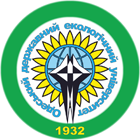Authors: Yu.G. Chernyakova, L.A. Vitavetskaya, P.G. Bashkaryova, Yu.V. Dubrovskaya,
Year: 2015
Issue: 19
Pages: 210-215
Abstract
Sets out the elements of a gauge-invariant method of relativistic calculations within the relativistic-relativistic perturbation theory characteristics three-quasiparticle atomic states, in particular, states that correspond to the so-called dielectrons satellites of spectral lines of multiply charged ions complex. Proposed to develop an effective solution to the problem of the computational scheme for calculating matrix elementsments corresponding perturbation operator for the N-quasiparticle states in the relativistic orbitals gaugeinvariant QED TV Single- quasiparticle approach and its use in calculations of the spectra dielectronic satellites complex atomic systems, and multiply charged ions. In order to construct the optimized nonempirical single- quasiparticle approximation of QED PT for mulkti-electron three-quasiparticle atomic system it is used an relativistic energy approach. The problem is reduced to the formulation of a gauge-invariant principle of determining the electron density of the core in the atomic system (or zero-order Hamiltonian, or in the particular case, the specific parameters of the model-building with several particles of the core without the use of empirical data). Seeking the principle of optimization is reduced to minimization of the energy functional, representing the contribution of the QED PT fourth-order polarization diagrams (second-order atomic PT).
Tags: atomic spectra; electronic satellites of spectral lines; relativistic perturbation theory; three-quasiparticle state
Bibliography
- Burkhalter P., Schneider R., Dozier C.M., Cowan R. Dielectronic satellite spectra of Na-like ions in laser-produced plasma. Phys.Rev.A, 1978, vol. 18, pp. 718-725.
- Driker M.N., Ivanova E.P., Ivanov L.N., Shestakov A.F. Relativistic calculation of spectra of 2-2 transitions in O-and F-like atomic ions. J.Quant.Spectr. Rad.Transfer, 1982, vol. 28, no. 6, pp. 531-535.
- Burkhalter P.,Nagel D.J. Advanced diagnostics based on observation of dielectronic satellite spectra of Ne-and Na-like ions in a laser produced plasmas. Phys.Rev.A., 1975, vol. 11, no. 3, pp. 782-788.
- Corliss C., Sugar J. Energy levels of iron. J.Phys.Chem.Ref.Data, 1982, vol. 11, no. 1, pp. 135-241.
- Fortov V.E., Bespabov V.E., Kulish M.I., Kuz S.I. Experimental study of optical properties of strongly coupled plasmas. Strongly Coupled Plasma Physics. N-Y.: Elsevier Sci.Publ., 1990. 571 p.
- Trabert E., Saathoff G., Wolf A. M1/E2 decay rates in CoXI,NiXII,CuXIII measured at heavy-ion storage ring. J.Phys.B.:At.Mol.Opt.Phys., 2004, vol. 37, pp. 945-952.
- TFR group, Cornille M., Dubau J., Loulergue M. Chare-dependent wavelengths shifts and line intensities in the dielectronic satellite spectrum of helium-like ions. Phys.Rev.A., 1985, vol. 32, no. 5, pp. 3000-3010.
- Jupen W.C., Denne B, Martinson I. Transitions in Al-like, Mg-like, Na-like Kr, Mo, observed in the JET Tokamak. Phys.Scripta, 1990, vol. 41, no. 5.- P. 669-674.
- Gillaspy J.D. EBIT spectra of highly stripped ions from the visible to the X ray. Phys.Scripta, 1996, vol. 65, pp. 169-174.
- Sobelman I.I. Introduction to the theory of atomic spectra. Moscow: Nauka, 1977. 213 p.
- Grant I.P. Relativistic Quantum Theory of Atoms and Molecules. Oxford, 2008. 650 p.
- Quiney H. Relativistic Quantum Mechanics of Atoms and Molecules. New Trends in Quantum Systems in Chemistry and Physics. Springer, 2002, vol. 6, pp. 135–173.
- Bell K.L., Berrington K., Crothers D., Hibbert A., Taylor K.T. BERTHA: 4-Component Relativistic Molecular Quantum Mechanics. Supercomputing, Collision Processes, and Application, Series: Physics of Atoms and Molecules. Springer, 2002, pp. 213–224.
- Glushkov A.V. Relativistic Quantum Theory. Quantum, mechanics of Atomic Systems. Odessa: Astroprint, 2008. 700 p.
- Ivanov L.N., Ivanova E.P. Extrapolation of atomic ion energies by model potential method: Na-like spectra. Atom.Dat. Nuc. Dat.Tab., 1979, vol. 24, pp. 95-121.
- Glushkov A.V., Ivanov L.N., Ivanova E.P. Generalized energy approach in relativistic theory of atom. Autoionization Phenomena in Atoms. Moscow: Moscow State Univ., 1986.
- Ivanova E.P., Gulov A.V. Theoretical investigation of the neon isoelectronic sequence. Atom.Data.Nucl.Data.Tabl., 1991, vol. 49, pp. 1-64.
- Gogava A.L., Ivanova E.P. Calculation of Na-like spectra–satellites to 2-3 transitions in Ne-like ions. In book: Spectroscopy of autoionization states of atoms and ions. Moscow: Nauka, 1988, pp. 212-256.
- Ivanova E.P., Glushkov A.V. Theoretical investigation of spectra of multicharged ions of F-and Ne-like isoelectronic sequences. J.Quant.Spectr.Rad.Tr., 1986, vol. 36, pp. 127-145.
- Ivanova E.P., Grant I.P. Oscillator strength anomalies in Ne isoelectronic sequence with applications to X-ray laser modeling. J.Phys.B.,1998, vol. 31, pp. 2871-2883.



